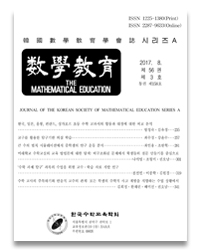여승현 Sheunghyun Yeo , 박주경 Jukyung Park , 남지현 Jihyun Nam , 임미인 Miin Lim
DOI:10.63311/mathedu.25.6423 JANT Vol.64(No.2) 111-132, 2025
This study explores the development and application of an AI-based instructional models that emphasize teacher agency in elementary mathematics education. While recent advances in AI have led to the proliferation of personalized learning environments, many current instructional models lack practical flexibility and fail to account for the pivotal role of teachers in dynamically orchestrating classroom learning. To address this gap, the study proposes < TocToc Adaptive Block Model >, a modular instructional framework designed to support planning, implementation, and evaluation of mathematics lessons using the AI-based system < TocToc-Math >. Drawing on the theoretical framework of teacher agency―including its reiterative, projective, and practical-evaluative dimensions―the model allows teachers to flexibly arrange instructional blocks such as Engage, Explore, Execute, Evaluate, and Personalize. This study employed a development research methodology centered on literature analysis, expert consultation, and feasibility review. Field experts validated the model’s educational feasibility and contextual adaptability, and three implementation types―immersive, selective, and flexible arrangement―were derived to support varied classroom contexts. This study highlights the importance of empowering teachers as learning designers and underscores the need for long-term research on teacher agency in AI-based environments. The findings offer practical and theoretical insights into designing AI-enabled instruction that preserves pedagogical intentionality and responsiveness.

 The Mathematical Education
The Mathematical Education

 The Mathematical Education
The Mathematical Education